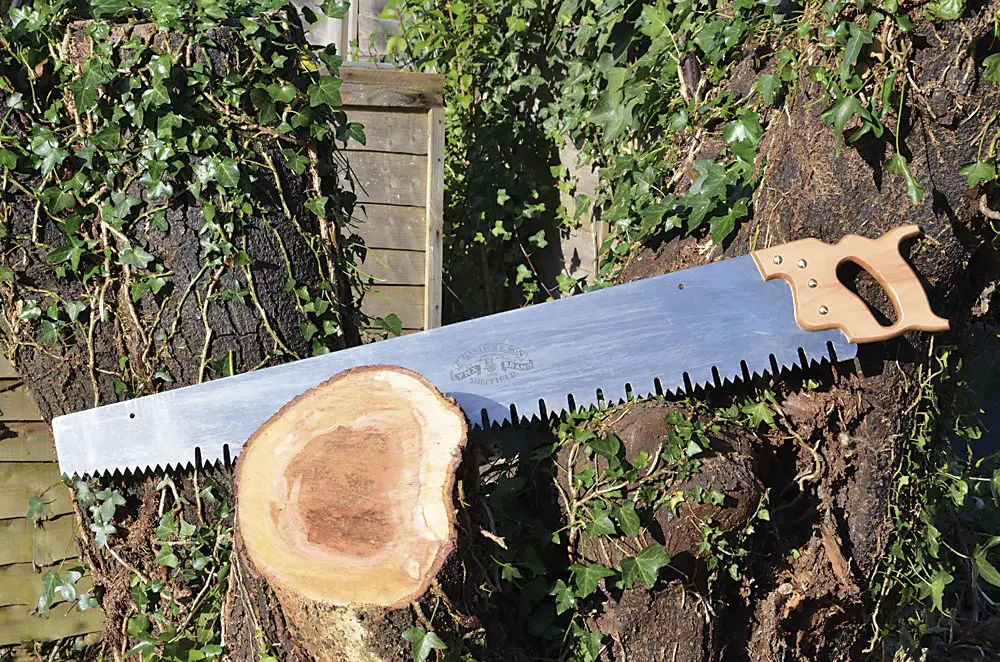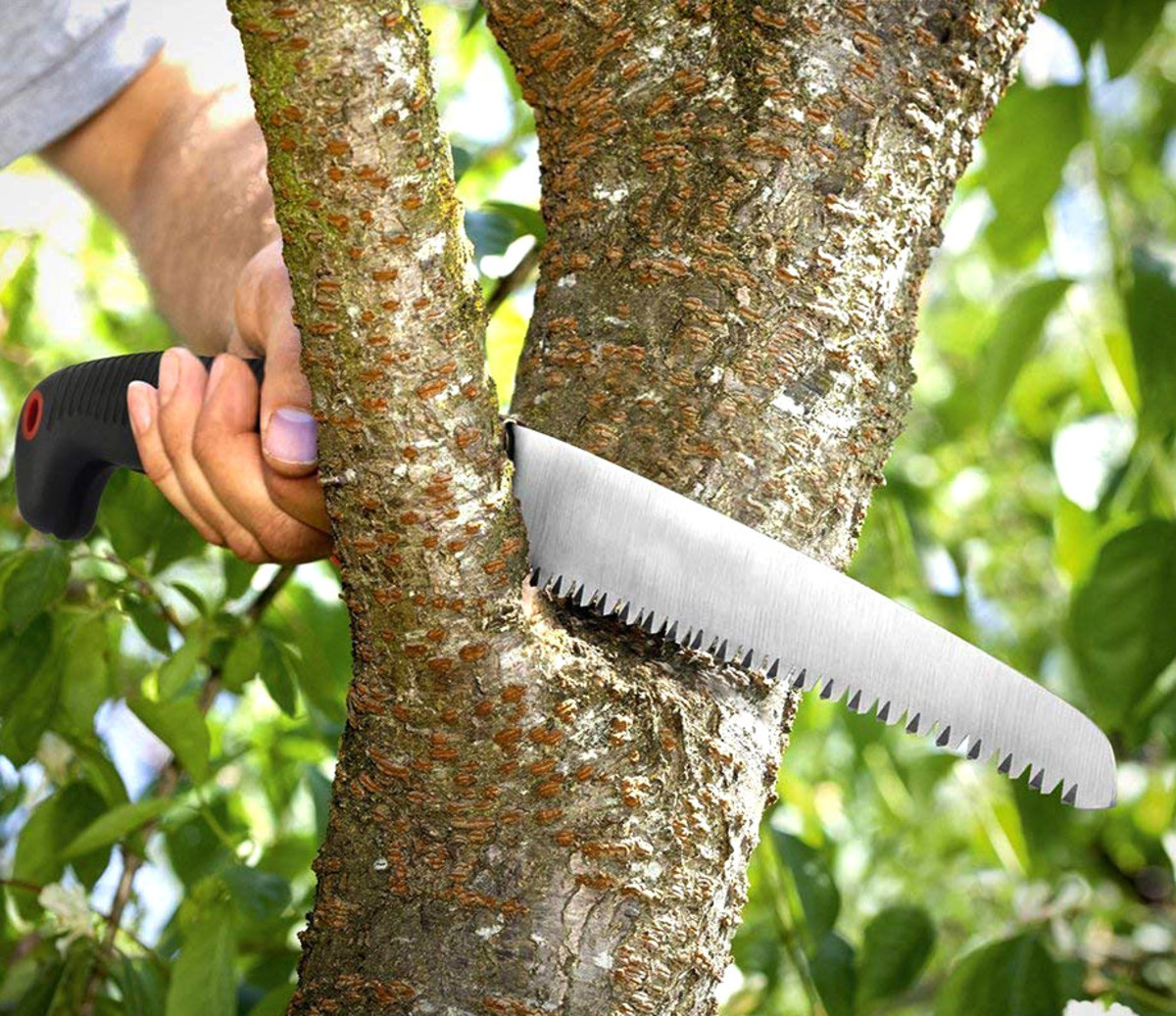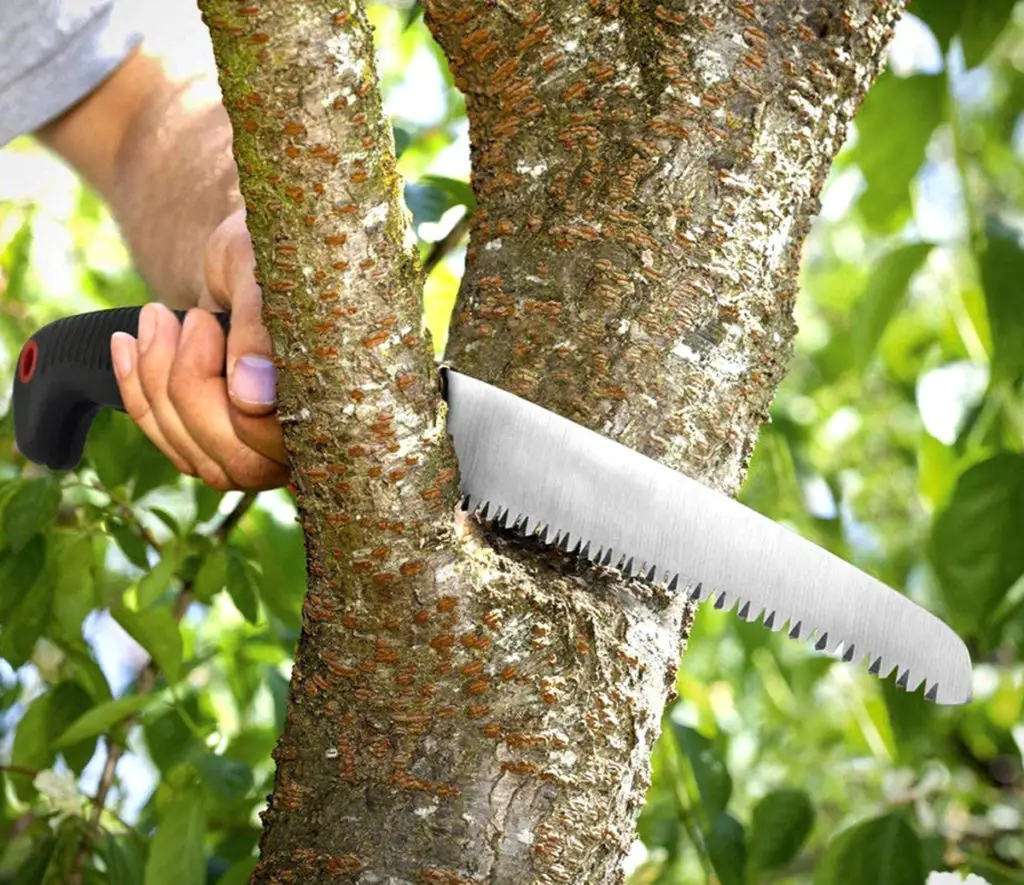The Benefits of Using a Hand Saw for Tree Cutting
When it comes to cutting trees, many individuals opt for gas-powered saws due to their speed and efficiency. However, using a hand saw for tree cutting offers several advantages that make it a preferred choice for many professionals and DIY enthusiasts. One of the primary benefits of using a hand saw is increased control and precision. With a hand saw, you have more control over the cutting process, allowing you to make precise cuts and avoid damaging surrounding trees or property. Additionally, hand saws are generally safer than gas-powered saws, as they eliminate the risk of kickback and reduce the likelihood of accidents. Furthermore, hand saws are an environmentally friendly option, producing no emissions or noise pollution. By choosing to cut trees with a hand saw, you can enjoy a more peaceful and sustainable tree cutting experience. Whether you’re a seasoned arborist or a beginner, incorporating a hand saw into your tree cutting arsenal can have a significant impact on your work. In fact, cutting trees with a hand saw can be a more rewarding and fulfilling experience, allowing you to connect with nature and appreciate the beauty of the trees you’re working with. With the right techniques and a bit of practice, you can master the art of cutting trees with a hand saw and enjoy the many benefits it has to offer.
Choosing the Right Hand Saw for Tree Felling
Selecting the best hand saw for cutting trees is crucial for a successful and efficient tree cutting experience. With so many options available, it’s essential to consider several factors to ensure you choose the right saw for your needs. One of the most critical factors is blade length. A longer blade can be more effective for cutting larger trees, but it may be more difficult to maneuver in tight spaces. A shorter blade, on the other hand, is ideal for smaller trees and more precise cuts. Another important consideration is the tooth pattern. A saw with a aggressive tooth pattern is better suited for cutting hardwoods, while a saw with a finer tooth pattern is ideal for softwoods. The handle material is also a crucial factor, as it can affect the comfort and control of the saw. Look for handles made from durable materials, such as fiberglass or wood, that can withstand the rigors of tree cutting. Popular hand saw brands, such as Silky and Bahco, offer a range of models that cater to different tree cutting needs. The Silky GomBoy Curve Professional Hand Saw, for example, is a popular choice among arborists, while the Bahco 396-LAP Laplander Saw is ideal for cutting smaller trees and branches. By considering these factors and choosing the right hand saw, you can ensure a safe and efficient tree cutting experience.
How to Prepare for a Safe and Efficient Tree Cutting Experience
Before cutting a tree with a hand saw, it’s essential to prepare for a safe and efficient tree cutting experience. This preparation is crucial to avoid accidents, ensure a successful cut, and minimize the risk of damage to surrounding property. The first step in preparing for tree cutting is to assess the tree’s condition. Look for signs of decay, cracks, or weak branches that could affect the cutting process. Next, plan the cutting direction, taking into account the tree’s lean, the surrounding environment, and the direction of the fall. It’s also crucial to wear appropriate protective gear, including a hard hat, safety glasses, ear protection, gloves, and steel-toed boots. Additionally, ensure that the cutting area is clear of obstacles and tripping hazards, and that there is a safe escape route in case of an emergency. Furthermore, consider the weather conditions, avoiding cutting trees during strong winds, lightning storms, or icy conditions. By taking the time to prepare for a safe and efficient tree cutting experience, you can minimize the risks associated with cutting trees with a hand saw and ensure a successful outcome.
Step-by-Step Guide to Cutting a Tree with a Hand Saw
Cutting a tree with a hand saw requires patience, skill, and attention to detail. By following a step-by-step guide, you can ensure a safe and successful tree cutting experience. The first step is to make the initial cut, also known as the “face cut.” This cut should be made on the side of the tree you want it to fall, about one-third of the way through the trunk. The initial cut should be angled downward, with the saw blade facing the direction of the fall. Next, create a notch by making a second cut, parallel to the initial cut, about two inches above the first cut. The notch should be about one-quarter of the way through the trunk. The notch serves as a guide for the final cut and helps to control the direction of the fall. Finally, make the final cut, also known as the “back cut,” on the opposite side of the notch. This cut should be made horizontally, about one inch above the notch, and should meet the initial cut. As the tree begins to fall, stand back and allow it to fall freely, avoiding any obstacles or hazards. By following this step-by-step guide, you can successfully cut a tree with a hand saw, ensuring a safe and efficient tree cutting experience.
Common Challenges and Solutions When Cutting Trees with a Hand Saw
When cutting trees with a hand saw, several challenges can arise, including binding, pinching, and kickback. Binding occurs when the saw blade becomes stuck in the tree, making it difficult to continue cutting. To overcome binding, try wiggling the saw blade back and forth while applying gentle pressure, or use a wedge to pry the saw free. Pinching occurs when the tree closes in on the saw blade, trapping it. To avoid pinching, make sure to create a notch that is not too deep, and use a saw with a curved or angled blade to help prevent the tree from closing in. Kickback occurs when the saw blade kicks back towards the user, often causing injury. To prevent kickback, always maintain a firm grip on the saw handle, keep your body positioned to the side of the saw, and avoid applying too much pressure. Additionally, consider using a saw with a kickback-reducing design, such as a saw with a curved or angled blade. By being aware of these common challenges and knowing how to overcome them, you can ensure a safe and successful tree cutting experience when cutting trees with a hand saw.
Maintenance and Care of Your Hand Saw for Optimal Performance
To ensure optimal performance and extend the lifespan of your hand saw, regular maintenance and care are essential. After each use, clean the saw blade with a soft brush or cloth to remove any debris or sap. This will prevent rust and corrosion, and maintain the saw’s cutting efficiency. Sharpening the saw blade is also crucial, as a dull blade can lead to increased fatigue and decreased cutting performance. Use a sharpening stone or file to maintain the blade’s edge, and always sharpen in the direction of the tooth pattern. When storing the saw, keep it in a dry place, away from direct sunlight, and consider applying a rust-inhibiting coating to the blade. Additionally, regularly inspect the saw’s handle and blade for any signs of wear or damage, and replace them as needed. By following these simple maintenance and care tips, you can ensure your hand saw remains in top condition, allowing you to continue cutting trees with precision and ease. Regular maintenance will also help to prevent common issues that may arise when cutting trees with a hand saw, such as binding and kickback. By taking care of your hand saw, you can enjoy a safe and successful tree cutting experience.
Tree Cutting Techniques for Different Tree Species and Sizes
When it comes to cutting trees with a hand saw, different species and sizes require unique techniques and considerations. For hardwoods, such as oak and maple, use a saw with a more aggressive tooth pattern to effectively cut through the dense wood. Softwoods, like pine and fir, are typically easier to cut and may require a saw with a finer tooth pattern. When cutting large trees, it’s essential to make precise, controlled cuts to avoid binding and kickback. Consider using a longer saw blade to increase cutting efficiency and reduce fatigue. For smaller trees, a shorter saw blade may be more suitable, allowing for greater control and precision. Additionally, consider the tree’s diameter and branch structure when planning your cutting direction and technique. By adapting your cutting technique to the specific tree species and size, you can ensure a safe and successful tree cutting experience when cutting trees with a hand saw. For example, when cutting a large hardwood tree, it may be necessary to make multiple cuts from different angles to avoid binding and kickback. By taking the time to assess the tree’s characteristics and adjust your technique accordingly, you can achieve a clean, efficient cut and avoid common challenges that may arise when cutting trees with a hand saw.
Conclusion: Mastering the Art of Cutting Trees with a Hand Saw
By following the guidelines and techniques outlined in this article, individuals can master the art of cutting trees with a hand saw. From selecting the right hand saw to maintaining and caring for it, and from preparing for a safe and efficient tree cutting experience to overcoming common challenges, this comprehensive guide has covered the essential skills and knowledge required to successfully cut trees with a hand saw. By practicing and refining their skills, individuals can develop the confidence and expertise needed to tackle a wide range of tree cutting tasks, from small pruning jobs to larger felling projects. Remember, cutting trees with a hand saw requires patience, persistence, and attention to detail, but with the right techniques and mindset, it can be a safe, efficient, and rewarding experience. By incorporating the tips and techniques outlined in this article into their tree cutting routine, individuals can ensure a safe and successful outcome, and enjoy the many benefits of cutting trees with a hand saw, including increased control, precision, and environmental sustainability.




